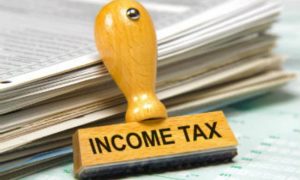Taxpayers are still trying to figure out whether they should switch to the new tax system proposed by finance minister Nirmala Sitharaman in her Budget 2020 speech or stay with the current tax regime. The existing system has several tax deduction options to reduce tax liability, but it also means long-term commitment towards tax-saving goals.
The new tax regime is a simplified option that doesn’t allow most of the tax deductions but it reduces the tax slab rates for annual income up to Rs 15 lakh. So, if you are planning to switch to the new tax regime, you’ll be well-advised to keep these crucial points in mind before doing so.
The 20% formula
If your annual income is less than Rs 20 lakh and your total tax deductions constitute 20% of your gross income, you’re likely to save more in taxes in the existing tax regime despite the higher slab rates. Take stock of all your income (salary, business income, capital gains, bank interest, etc.,) as well as standard deduction of Rs 50,000 (if you’re salaried), eligible investments and life insurance purchases up to Rs 1.5 lakh under Section 80C, medical expenses under Section 80D, home loan interest payments up to Rs 2 lakh under Section 24B, etc.
See if your deductions get up to 20% of your income. If they do, you’re going to save more taxes in the old regime. So, do not surrender your deductions without calculating what’s best for you.
Switching restrictions
It is easy to switch from the existing tax regime to the new one; however, once opted, individuals with business income can’t switch back to the old regime. Salaried individuals don’t face such a restriction. Taxpayers with non-business income, therefore, need to plan the selection of their tax regime carefully.
Attractive deductions on home & education loans
With deductions up to Rs 1.5 lakh on principal repayments under Section 80C, loan interest payment up to Rs 2 lakh under Section 24B, and additional deduction for eligible borrowers up to Rs 1.5 lakh under Section 80EEA, a home loan is one of the biggest tax-saving instruments.
Together, these tax deductions lower your tax burden by Rs 1.5 lakh if you’re in the 30% slab. Similarly, those repaying an education loan for self or a dependent can claim a deduction for their entire loan interest under Section 80E. Therefore, loan holders can claim significant deductions and reduce their taxes by staying in the old regime. This is especially relevant for taxpayers with business income.
The new regime advantage
If you find that buying tax-saving instruments are not helping your money goals, you may find that the new regime is more beneficial. Many taxpayers feel that investing in popular tax-savers like PPF and NPS has disadvantages such as the long lock-ins which create liquidity problems.
However, even in the new regime, you must continue investing in instruments aligned with your goals, liquidity requirements, and risk tolerance.
Dilemma for senior citizens
Senior citizens enjoy several tax deductions under the old regime, so switching to the new regime could take away those privileges. Senior citizens prefer safe investment avenues like fixed deposits and small savings. They get tax-exempt interest income up to Rs 50,000 under Section 80TTB.
However, they also don’t like tax-saving investments due to lock-ins. As such, senior citizens should carefully evaluate their investment commitments and income needs to decide which regime works best.
































